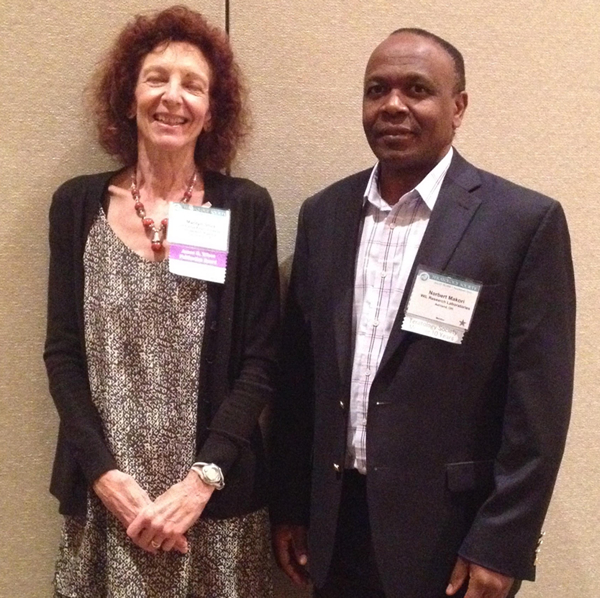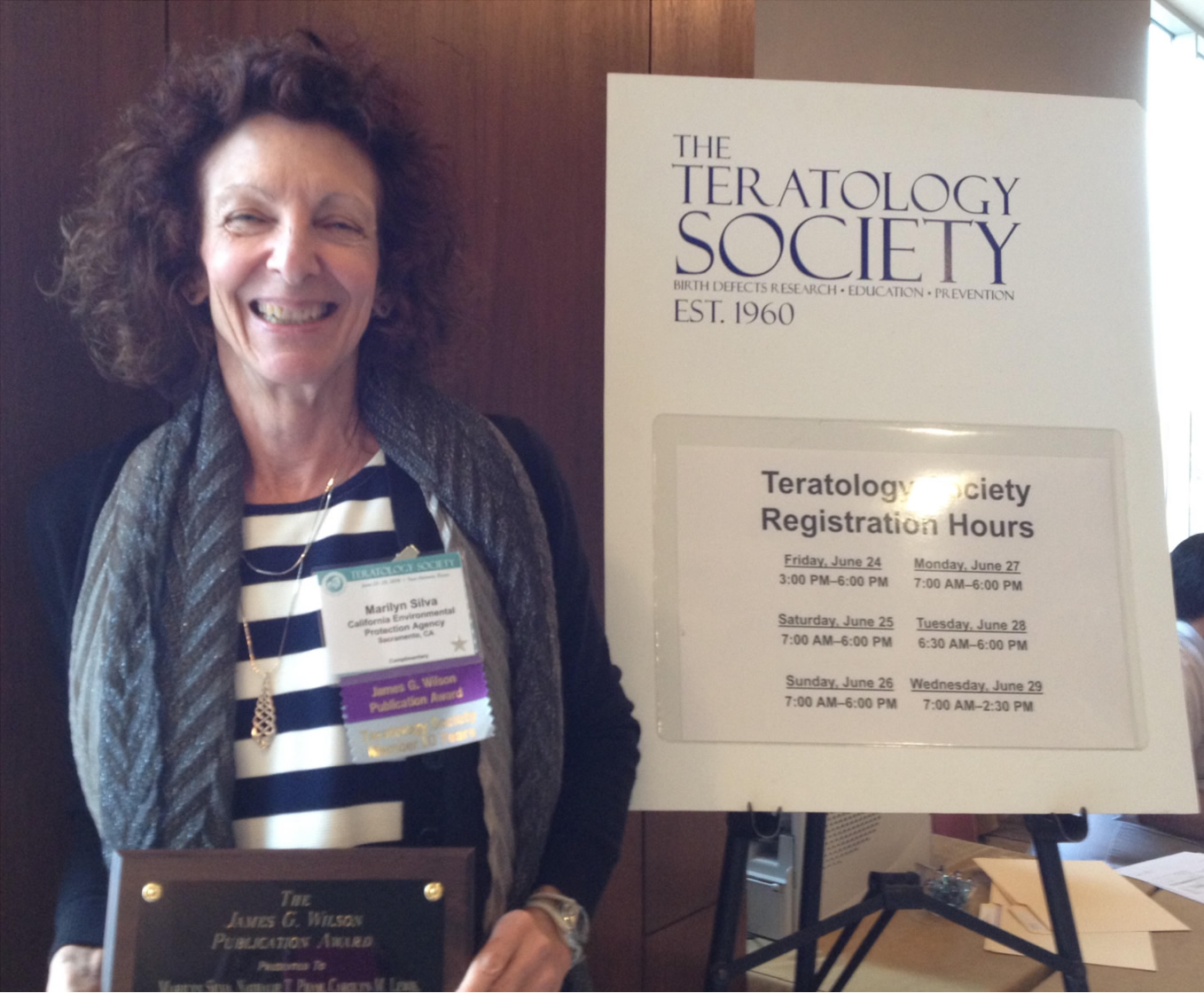Membership
Meet a Member
Marilyn H. Silva, PhD, DABT
What type of research do you do?
In retirement, I’ve used my background in pesticide data review and risk assessment, along with new approach methodologies to rank chemical toxicity, compare in vivo toxicological points of departure (POD) for well-characterized chemicals to predict equivalent administered doses based on computational methodologies by open access tools (CompTox Chemicals Dashboard (epa.gov;); ICE: Integrated Chemical Environment (nih.gov). I have used these new approach methodologies to study the co-toxicities of Δ-9-THC and chlorpyrifos (affecting neurodevelopment and obesity in vivo).
I have also had the great privilege of serving as the Co-Chair of the UC Davis Community Stakeholders’ Advisory Committee (CSTAC) working with the UC Davis Community Engagement Core (CEC) and Environmental Health Sciences Center Directed by Dr. Irva Hertz-Piccotto. (UC Davis Environmental Health Sciences Center). CSTAC brings together academia, environmental justice groups, state agencies and communities at risk to solve some of the most challenging public health issues we are facing today. My career involved performing pesticide risk assessments, but I had no firsthand interaction with the communities impacted by the numbers I generated, or the health effects experienced by those exposed. My position as co-chair allows me to meet and interact with members of generally under-represented communities which has profoundly affected my views of risk assessment and scientific research in general. The CSTAC position allows me to review NIEHS pilot project grants dealing with health effects from exposure to wildfire smoke and COVID (e.g., birth defects, impacts on mental and physical health of exposed youth, asthma, and other effects) on underserved community members.
What would you describe as an amazing opportunity in your career?
I’ve had several opportunities in my career. They were all learning experiences. For example, I was able to transfer to the pesticide risk assessment section at DPR, even though I was hired simply for data review. I learned from the ground up, which was an exciting and challenging experience. Data review provided a strong foundation for my interest and involvement with teratology and reproductive toxicology. I was allowed to publish the results of my work, present posters and attend the Society for Birth Defects Research and Prevention (BDRP) and Society of Toxicology (SOT) meetings. This was not a standard policy in my Branch, but it provided a great opportunity to learn. I was also supported in becoming a Diplomate of the American Board of Toxicology. Later, my Branch Chief supported me in my desire to learn about new approach methodologies and computational toxicology, with the hopes that they could eventually be used in risk assessment. The CSTAC position gives me the opportunity to meld my background in toxicology with social sciences. Even in retirement, there are many opportunities to learn.
What do you consider to be your most influential or important career achievement, milestone, or accomplishment, and why?
I took advantage of a collaboration between DPR and the Office of Environmental Health Hazard Assessment to study ToxCast/Tox21 androgenic and estrogenic assay results for two well characterized pesticides (endosulfan and methidathion) to compare with effects in animals related to endocrine disruption and neurotoxicity. I and my co-authors received the James Wilson Publication Award from BDRP. This was by far the most important achievement I had received because it brought computational toxicology methods and awareness to DPR for future use in risk assessment. Then last year I, along with my former co-author Lauren Zeise, received the BDR Distinguished Scholar Awards for our continued work on use of computational toxicology to predict neurodevelopmental and endocrine effects in vivo. I feel like I had contributed knowledge to the field.
What is your best tip to succeeding as a birth defects researcher?
Passion, persistence, love of learning and concern for addressing the challenges of birth defects. The wonderful thing is that the definition of a “birth defects researcher” is very broad. For example, open access computational toxicology tools are used for identification of developmental neurotoxicity and potential endocrine disruptions. At the other end of the spectrum are clinicians and those working directly with patients to help and heal while gathering data to help prevent, cure, or solve critical birth defect issues. Continue to look around and take advantage of new tools and techniques in the field and you will never be short of exciting projects.
Why did you choose birth defects research?
Birth defects research was always my personal passion, but it was never a part of my job definition. I chose to study it because it is a fascinating field to learn about. As I advanced my expertise in the subject, I was consulted on issues related to endocrine disruption during development and represented DPR in the early stages of the endocrine disruptor screening program. There were no hinderances in my pursuit of this information. I addition, I was able to help with data interpretation for teratology and reproductive studies.
Why did you join BDRP?
There used to be a Western Teratology Society meeting, held usually in Washington state or California. It was a small and casual group. I met many birth defects researchers, including Ken Jones and Steven Harris. In fact, at one meeting, Steve gave a live lab demonstration of resorptions in rats, among other developmental findings. That was a profound and enlightening presentation that I never forgot. It is one thing to read descriptions of findings and it is entirely different to see it live. From this group I learned about the Teratology Society (now BDRP), and I decided to attend a meeting. I loved it at once because it was smaller than the thousand-fold numbers attending SOT meetings which made it easier to find and approach fellow researchers and ask questions. Another advantage is that the meetings are always held in June, after the school year has ended, so I always brought my family to the meetings. Along those lines, the meeting always had activities for families and that helped make it a comfortable and relaxing place to learn.
What does it mean to you to be involved in BDRP?
It means I can be a part of a scientific community with incredibly diverse expertise that is supportive of me and my work, regardless of my age or stage of career or retirement. I am judged, if you can call it that, on the quality of my work and not on the position I hold or other subjective criteria.



